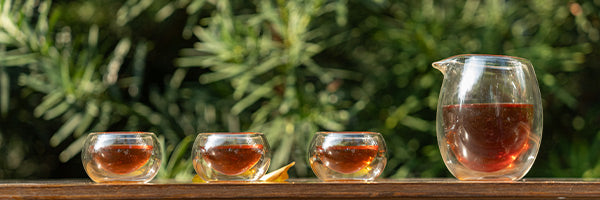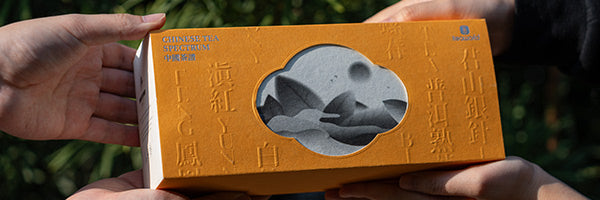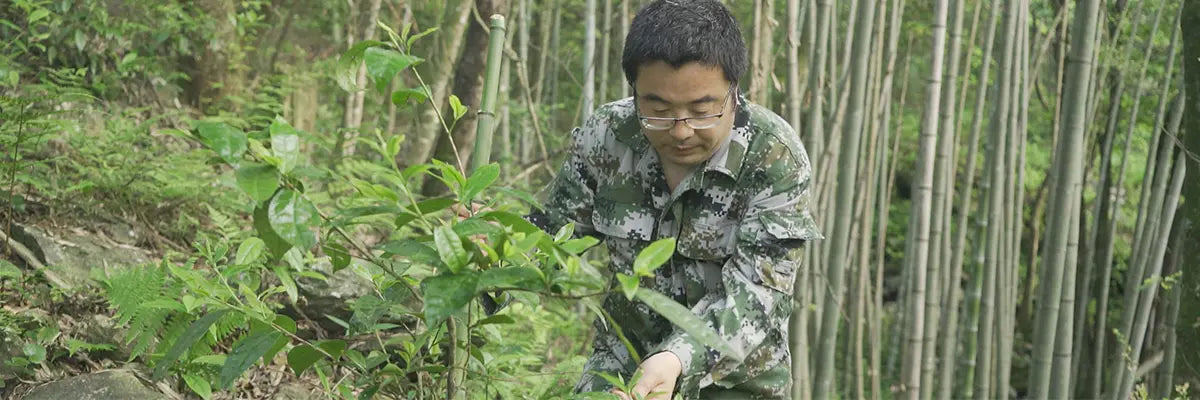Зеленый чай является наиболее широко производимым видом среди шести основных категорий чая в Китае.
Каждый регион имеет свой уникальный колорит и характер , сформированный местным климатом, почвой и мастерством .
Среди такого разнообразия легко растеряться . В этой статье мы расскажем вам о десяти лучших рассыпных зелёных чаях Китая, изучив их происхождение , вкусовые характеристики и советы по завариванию , чтобы вы могли лучше понять особенности каждого из них и найти чай, который вам по вкусу .
1、Сиху Лунцзин (Колодец Дракона)
Чай «Лунцзин» на протяжении веков был неотъемлемой частью китайской культуры, украшая императорские дворы и почитаясь императорами. Его связь с умиротворяющими пейзажами Ханчжоу и вдохновляющей его поэзией превратила его в символ утонченности и безмятежности. Более того, историческая связь с легендарными личностями, поэтами и даже государственными деятелями закрепила за чаем «Лунцзин» место в анналах китайского культурного наследия.
Помимо своей привлекательности как напитка, Лунцзин воплощает в себе целую философию — стремление к совершенству в мастерстве и олицетворение гармонии между природой и человеческим творчеством.
Регион происхождения и производства:
Чай Лунцзин, или «Колодец Дракона» , произрастает в живописном районе Западного озера в Ханчжоу, провинция Чжэцзян. Этот почитаемый чай произрастает среди пышных холмов, окружающих легендарный Колодец Дракона. Здесь уникальный терруар, климат и искусное мастерство местных мастеров сочетаются для создания этого ценного сорта.
Характеристики и вкусовой профиль:
Чай Лунцзин, известный своими плоскими, спрессованными изумрудно-зелёными листьями, напоминающими по форме воробьиный язык, отличается элегантностью внешнего вида и вкуса. Его нежный настой раскрывается тонким ароматом каштана в сочетании с нежной маслянистой текстурой. Вкусовой профиль отличается гармоничным сочетанием ореховых ноток, лёгкой сладости и длительным, свежим травянистым послевкусием — симфония тончайших ароматов, которая соблазняет нёбо.
Рекомендации по завариванию:
Чтобы по-настоящему насладиться ароматом лунцзина, искусство заваривания имеет решающее значение. Оптимальный способ заваривания — замачивание листьев в воде температурой около 70–75 °C не более двух-трёх минут. Используйте стеклянную посуду или фарфоровый чайник, чтобы наблюдать за грациозным танцем листьев, раскрывающихся, глоток за глотком высвобождая свою эссенцию.
Если вы хотите узнать больше о китайских зелёных чаях, наш дегустатор зелёных чаёв — отличный выбор, если вы хотите попробовать Сиху Лунцзин, но не уверены, подходит ли он вам. В этом дегустаторе представлены лучшие китайские зелёные чаи из нашей коллекции, такие как Лунцзин (Колодец Дракона), Билочунь (Пи Ло Чунь), Хуаншань Маофэн, Эньши «Нефритовая Роса», зелёный чай с жасмином и зелёный чай со старых деревьев . Он предназначен как для новичков, так и для ценителей, ищущих что-то необычное.
2、 Билуочунь (Bi Lo Chun)
Название «Билочунь» буквально означает «Весна Зелёной Улитки». Его собирают во время весеннего равноденствия и «зернового дождя» (по 24 солнечным периодам). Чай имеет завитую форму, напоминающую улитку. В начале династии Тан (618–907) он был ценной данью императору и королевским семьям. Чайные листья плотные, вьющиеся, серебристо-зелёные с белыми ворсинками. Особый метод посадки придаёт чаю «Билочунь» смешанный аромат цветов и фруктов. При заваривании завитые чайные листья медленно раскрываются и опускаются на дно чашки, а настой получается прозрачным и зелёным.
Происхождение и традиционное выращивание:
Билочунь, родом с туманных холмов, окружающих озеро Дунтинху в провинции Цзянсу, – это чудо, созданное в безмятежных объятиях природы. Название этого чая, которое переводится как «Зелёный источник улиток», происходит от его завитковой формы, напоминающей раковины улиток, скрученные вручную искусными мастерами. Его выращивание включает в себя тщательный сбор, при котором ранней весной отбираются только самые нежные почки и листья, что гарантирует высочайшее качество и вкус.
Отличительные особенности и вкусовые характеристики:
Чай Билочунь может похвастаться очаровательным внешним видом благодаря своим нежным, кудрявым, пушистым листьям, которые раскрываются при заваривании, источая завораживающий аромат. После заваривания его бледно-нефритовый настой представляет собой гармоничное сочетание цветочных нот, часто напоминающих орхидеи или магнолии, с лёгким фруктовым оттенком. Его тонкий вкусовой профиль источает освежающую сладость в сочетании с длительным, слегка ореховым послевкусием — симфония ароматов, пробуждающая спокойствие и изысканность.
Методы заваривания и рекомендации по подаче:
Идеальный заваривание требует деликатного подхода. Заваривайте листья Билочунь в воде при температуре около 80–85 °C (175–185 °F) в течение одной-двух минут. Насладитесь красотой раскрывающихся листьев в стеклянном чайнике или гайвани , позволяя ароматам очаровывать ваши чувства, прежде чем наслаждаться каждым глотком.
Попробуйте лучший листовой зеленый чай из Китая, продолжая наше путешествие по замысловатому переплетению образцов чая от iTeaworld, каждый из которых сплетает свою собственную историю наследия, вкуса и культуры.
3, Хуаншань Маофэн
Также называется: Пик Желтой Горы
Место произрастания: Желтые горы в городе Хуаншань, провинция Аньхой.
Преимущества: поддерживает бодрость, обладает мочегонным действием, улучшает циркуляцию крови и способствует снижению веса…
«Хуаншань Маофэн» часто можно встретить в списках лучших китайских брендов зелёного чая. Чайные листья, словно птичий язычок, слегка изогнуты. Чайный настой обладает стойким вкусом и ароматом орхидеи или китайского каштана. Он прозрачный и желтоватый. Его буквально называют «острыми чайными листьями, покрытыми пекой с горы Хуанша», потому что свежезаваренные чайные листья имеют острые кончики и покрыты белым пекой. Чайные листья собирают с Жёлтой горы, или горы Хуаншань.
Географическое положение и особенности выращивания:
Чай Хуаншань Маофэн, расположенный среди живописных пейзажей Желтых гор в городе Хуаншань провинции Аньхой, процветает среди туманных вершин и нетронутой природы. Его выращивание включает в себя кропотливый сбор нежных почек и молодых листьев, которые вручную собираются с туманных горных склонов ранней весной. Эта нетронутая природа наделяет чай уникальным характером и непревзойденным качеством.
Вкусовые ноты и уникальные характеристики:
Листья Хуаншань Маофэн, почитаемые среди лучших китайских зелёных чаёв, изящно завиваются, словно птичий язычок. При заваривании чай раскрывается прозрачным желтоватым настоем с тонким вкусовым профилем. Он обладает стойким ароматом орхидеи в сочетании с нотками китайского каштана, даря чувственное путешествие, которое надолго остаётся во рту. Присутствие белого чая пеко, покрывающего острые свежие чайные листья, собранные с Жёлтой горы, обуславливает его характерное название, которое переводится как «острые чайные листья, покрытые пеко с горы Хуаншань».
Методы заваривания и идеальная практика подачи:
Чтобы полностью раскрыть его потенциал, заваривайте Хуаншань Маофэн в воде температурой 80–85 °C (175–185 °F) примерно одну-две минуты. Наблюдайте, как листья грациозно раскрываются в стеклянном чайнике или гайвани, позволяя настою раскрыть свой пленительный аромат, прежде чем насладиться его изысканным вкусом.
Продолжая наше исследование лучшего китайского листового чая , позвольте Хуаншань Маофэну послужить свидетельством изысканного сочетания природы, традиций и вкуса, вплетенных в каждую чашку.
4、Энши Нефритовая Роса
«Энь Ши Ю Лу Джейд Дью» — это традиционный зелёный чай ранней весны из Эньши (провинция Хубэй), который обрабатывается паром, а не обычной обжаркой на сковороде. Благодаря использованию тонких молодых листьев он даёт насыщенный, зелёный настой с мягким сливочным вкусом и аппетитным послевкусием.
Специфика региона и процесс сбора урожая:
Чай «Нефритовая роса Эньши» произрастает в туманных долинах города Эньши, расположенного среди живописных ландшафтов провинции Хубэй. Этот чай, выращенный на большой высоте среди окутанных туманом холмов, проходит кропотливый процесс сбора ранней весной. Опытные чайные мастера вручную отбирают нежные почки и листья, гарантируя непревзойденную свежесть и качество.
Профиль вкуса и отличительные характеристики:
При заваривании Enshi Jade Dew раскрывается бледно-зелёным настоем с нежным, но сложным ароматом. Его вкус характеризуется гармоничным сочетанием растительных нот, напоминающих тушёную зелень, дополненных лёгкой сладостью и длительным, освежающим послевкусием. Этот чай воплощает собой тонкий баланс, даря каждому глотку утончённое и бодрящее ощущение.
Инструкции по завариванию и рекомендации по подаче:
Чтобы раскрыть всю суть чая «Нефритовая роса Эньши», заваривайте листья в воде температурой 80–85 °C (175–185 °F) в течение одной-двух минут. Наблюдайте, как листья грациозно раскрываются в стеклянном чайнике или гайвани, позволяя ароматам проникнуть внутрь, прежде чем насладиться нежным вкусом. Этот чай вознаграждает терпение, даря восхитительные ощущения при правильном заваривании.
5. Зеленый чай с жасмином
Зеленый чай с ароматом жасмина — один из классических сортов чая, который можно попробовать в китайских ресторанах. Он великолепно сочетается с солёной и острой пищей, дополняя её, но не перебивая вкус. Его популярность распространяется по всему миру благодаря успокаивающим свойствам и приятному аромату, что делает его излюбленным выбором ценителей чая по всему миру.
Происхождение и традиционные методы приготовления:
Зеленый чай с жасмином берет свое начало в китайской провинции Фуцзянь, где он был впервые произведен во времена династии Сун. Традиционный метод заключается в тщательном наслоении цветов жасмина на листья зеленого чая, что позволяет чаю впитать в себя их аромат. Этот сложный процесс придает чаю тонкий цветочный аромат, который отличает зеленый чай с жасмином .
Профиль аромата и вкуса с нотками жасмина:
Отличительная черта зелёного чая с жасмином — его чарующий аромат — душистый букет жасмина, пленяющий чувства сладкими цветочными нотами. При заваривании чай раскрывается бледно-золотистым настоем с тонким вкусом. В его аромате изысканно сочетаются цветочная сладость жасмина и растительные ноты зелёного чая, создавая гармоничное и освежающее ощущение.
Инструкции по завариванию и рекомендуемые сочетания:
Чтобы ощутить всю гамму вкусов, заваривайте зелёный чай с жасмином в воде температурой около 80°C (175°F) примерно две-три минуты. Важно дать чайным листьям полностью раскрыться, высвобождая насыщенный аромат жасмина. Сочетайте этот чай с лёгкими, тонкими блюдами или десертами, чтобы дополнить его нежный вкус и аромат.
6. Зеленый чай со старого дерева
Зеленый чай из старых деревьев — необычный зеленый чай, который изготавливается из старых чайных деревьев возрастом более 100 лет, растущих высоко в горах.
Характеристики чая из старых чайных деревьев
1.Сексуальные сорта чайного дерева возрастом более 100 лет
2.Одно чайное дерево на площади 6-8 м².
3.Выбрал 1 смыв в год.
4. Чай сладкий, выдерживает многократные заваривания и имеет слабо терпкий вкус.
Происхождение от древних деревьев:
Зеленый чай «Старые деревья» получают с древних чайных деревьев, часто возраст которых исчисляется веками, растущих в различных регионах Китая, включая провинции Юньнань и Фуцзянь. Эти древние деревья, богатые историей, придают чаю исключительный характер и особую ценность. Сбор листьев с этих вековых деревьев считается искусством, воплощающим гармоничную связь природы, традиций и мастерства чайного дела.
Профиль вкуса, редкость и эффекты выдержки:
Вкусовой профиль этого чая воплощает сложность и глубину, обладая богатым, тонким вкусом. Он обладает мягкой и гладкой текстурой с цветочными оттенками и сладковатыми нотками, которые часто раскрываются со временем, подобно выдержке изысканных вин. Его редкость обусловлена ограниченным количеством листьев, собираемых с этих древних деревьев, что делает его желанным деликатесом среди ценителей чая.
Методы заваривания, позволяющие максимально раскрыть уникальные качества пива:
Чтобы раскрыть весь спектр вкусов, заваривайте старый зелёный чай в воде температурой около 82–85 °C (180–185 °F) примерно три-четыре минуты, давая листьям достаточно времени настояться. Использование глиняного чайника или гайвани позволяет заваривать чай несколько раз, каждый раз раскрывая разные грани его вкусового профиля. Терпение и внимание к времени заваривания важны для того, чтобы в полной мере насладиться его тонким вкусом.
7. Белый чай Анжи
Район выращивания: уезд Анжи, город Хучжоу, провинция Чжэцзян.
Преимущества: потеря веса, замедление старения, профилактика рака…
Хотя в названии белого чая «Аньцзи» есть слово «белый», он имеет отношение не к белому чаю, а к настоящему зелёному чаю. Этот чай, известный своей редкостью, производится из особого сорта чайного куста, известного своими светлыми листьями. Листья подвергаются минимальному окислению, что позволяет получить нежный, бледный оттенок, который отличает его от других чаёв. Его выращивание включает в себя аккуратный сбор молодых листьев ранней весной, что позволяет оценить чистоту и уникальный вкус чая. Его историческое происхождение тесно связано с историями о предпочтениях императоров и стремлении к созданию исключительных чаёв. Культурное значение этого чая заключается в его способности воплощать в себе сущность спокойствия, символизируя чистоту и гармонию с природой.

Вкусовые качества и польза для здоровья:
После заваривания белый чай «Аньцзи» обладает освежающим, слегка сладковатым вкусом, дополненным нотками растительной свежести, напоминающими весенние овощи. Этот чай богат антиоксидантами и содержит большое количество аминокислот, таких как теанин, способствующих расслаблению и концентрации. Его потенциальные полезные свойства варьируются от снижения стресса до поддержания обмена веществ и улучшения когнитивных функций.
Рекомендации по завариванию и идеальные способы подачи:
Чтобы оценить все нюансы белого чая «Аньцзи», заваривайте его в воде температурой около 70–75 °C (160–170 °F) в течение одной-двух минут. Нежный вкус этого чая требует бережного обращения во время заваривания. Используйте стеклянную или фарфоровую посуду, чтобы наблюдать, как листья грациозно раскрываются, позволяя настою раскрыть свои тонкие ароматы и вкусы. Прелесть этого чая заключается в его простоте и чистоте.
8、 Чай Синьян Маоцзянь
Зона произрастания: город Синьян, провинция Хэнань
Преимущества: снижение веса, замедление старения, освежение ума, улучшение аппетита…
Другой известный китайский сорт рассыпного зелёного чая , Синьян Маоцзянь, также подразделяется на множество сортов в зависимости от времени сбора. Его характеристики включают насыщенный белый цвет, каштановый аромат, стройную и прямую форму и свежий вкус. При заваривании чайный настой приобретает жёлто-зелёный оттенок. Название чая «Маоцзянь» означает «пушистые кончики», что указывает на нежную, пушистую текстуру листьев, свидетельствующую об их высочайшем качестве.
Географические данные и условия произрастания:
Чай Синьян Маоцзянь произрастает в живописных горных районах города Синьян провинции Хэнань, Китай. Его выращивание процветает благодаря умеренному климату, плодородной почве и уникальному рельефу, что способствует исключительному качеству чая. Чайные кусты, растущие на большой высоте, наслаждаются влажным воздухом и обильными осадками, что способствует идеальному развитию листьев.
Вкусовой профиль и отличительные особенности:
Этот уважаемый чай обладает восхитительным сочетанием свежести и многогранности вкуса. Его настой получается ярким, жёлто-зелёным, с мягким, мягким вкусом и лёгкой сладостью. Синьян Маоцзянь выделяется тонкими, слегка скрученными листьями, покрытыми тонкими волосками, что придаёт ему нежную текстуру и усиливает его тонкий вкус.
Рекомендации по завариванию:
Чтобы раскрыть изысканный вкус чая, заваривайте Синьян Маоцзянь в воде температурой около 80–85 °C (175–185 °F) в течение одной-двух минут. При заваривании в стеклянном чайнике или гайвани листья плавно раскрываются, раскрывая свой аромат и вкус. Традиционно местные жители часто выбирают метод заваривания гунфу, используя несколько коротких заварок для раскрытия полного спектра вкусов чая.
9, Эмэй Чжуецин
Зона произрастания: горы Эмэй, город Лэшань, провинция Сычуань.
Преимущества: детоксикация, противомикробное действие, утоляет жажду, питает кожу, замедляет старение…
На горе Эмэй произрастает особый сорт чая под названием Чжуецин, который производится исключительно из почек и имеет насыщенный белый цвет. Чайный настой получается ароматным, прозрачным и желтовато-зеленым. Этот чай отличается климатическими и географическими особенностями этого района.

Происхождение: гора Эмэй.
Чай Эмэй Чжуецин берёт своё начало на туманных склонах горы Эмэйшань, объекта Всемирного наследия ЮНЕСКО в провинции Сычуань, Китай. Этот чай часто ассоциируется с буддийскими традициями и считается воплощением безмятежной и чистой сущности горы. Легенда гласит, что монахи выращивали и почитали этот чай за его способность вызывать медитативное состояние, способствуя спокойствию и ясности ума.
Профиль вкуса и примечательные характеристики:
Чай Эмэй Чжуецин обладает тонким и изысканным вкусом, отражающим спокойствие его происхождения. После заваривания он раскрывается бледно-зеленым настоем с нежным цветочным ароматом и ноткой каштановой сладости. Его вкус характеризуется мягкими растительными нотками и освежающим послевкусием, предлагая гармоничный баланс, пленяющий чувства.
Инструкции по завариванию и рекомендуемые ритуалы:
Чтобы оценить изысканные вкусовые оттенки чая Эмэй Чжуецин, заваривайте листья в воде температурой около 80–85 °C (175–185 °F) в течение двух-трёх минут. В стеклянном чайнике или гайвани листья плавно раскрываются, высвобождая чайную эссенцию. Традиционные ритуалы заваривания чая делают акцент на осознанности и изяществе, превращая процесс чаепития в момент созерцания и наслаждения.
10, Дуюнь Маоцзянь
Также называется: Белый Маоцзянь, Тонкий Маоцзянь
Район выращивания: город Дуюнь, Цяньнань, провинция Гуйчжоу.
Преимущества: детоксикация, противомикробное действие, снижение веса, питание кожи, замедление старения…
Мао Цзэдун дал название Дуюнь Маоцзянь. Во время праздника Цинмин чайные листья обычно собирают, каждый из которых состоит из одного листа и одного ростка. Аккуратно скрученные, слегка скрученные, высушенные чайные листья имеют насыщенный белый цвет с желтовато-зеленым оттенком. Чайный настой имеет длительный сладкий вкус и зеленовато-желтый оттенок после заваривания.

Географическое положение и особенности плантации:
Чай «Дуюнь Маоцзянь», известный своим качеством, произрастает в туманных и горных районах Дуюня в провинции Гуйчжоу, Китай. Уникальный микроклимат региона, характеризующийся туманными холмами и обильными осадками, создаёт идеальные условия для выращивания чая. Опытные мастера тщательно ухаживают за чайными кустами, растущими на умеренных высотах, что гарантирует получение урожая высочайшего качества.
Вкусовой профиль и отличительные качества:
Этот ценный чай обладает уникальным вкусовым профилем, отражающим первозданную природу региона. При заваривании он раскрывается золотисто-желтым настоем с тонким цветочным ароматом, дополненным тонкой сладостью и едва уловимыми растительными нотками. Дуюнь Маоцзянь отличается мягкой текстурой и освежающим послевкусием, обеспечивая сбалансированный и бодрящий напиток.
Методы заваривания и рекомендации по подаче:
Чтобы в полной мере оценить многогранность чая Дуюнь Маоцзянь, заваривайте листья в воде температурой около 80–85 °C (175–185 °F) в течение двух-трёх минут. Использование стеклянного чайника или гайвани позволяет листьям плавно раскрываться, максимально раскрывая аромат и вкус чая. Насладитесь ритуалом приготовления чая, подарите себе минуты покоя и наслаждения этим исключительным напитком.
Коллекция зеленого чая – тщательно подобранный выбор для вас
1. В этом подарочном наборе премиум-класса собраны четыре самых известных китайских зелёных чая первого сбора: Лунцзин (Колодец Дракона) , Билочунь , Хуаншань Маофэн и Эньши Юйлу . Каждый чай, тщательно отобранный на аутентичных плантациях, обладает уникальным вкусом самого раннего весеннего урожая. Идеально подходит для осознанной дегустации или в качестве изысканного подарка любителям чая .
2. Откройте для себя истинный дух китайского зеленого чая с этим тщательно отобранным набором, в который входят:
Чай «Нефритовая роса Эньши», «Колодец дракона», «Билуочунь», зелёный чай с жасмином, зелёный чай «Древний зелёный чай» и «Хуаншань Маофэн» . Успокаивающее путешествие лёгкости и ясности — словно весенний бриз у реки. Идеально подходит как для новичков, так и для опытных ценителей , а также станет прекрасным подарком.
Коллекция китайского зеленого чая – 6 премиальных чаев для любителей чая 100 г
3. Этот набор был тщательно подобран, чтобы помочь любителям чая открыть для себя самые любимые зелёные чаи Китая. В него входят четыре классических сорта из 10 самых известных китайских чаёв: «Колодец дракона», «Билочунь», «Хуаншань Маофэн» и «Луань Гуапянь ». Все чаи закупаются напрямую у проверенных фермеров в известных регионах происхождения и изготавливаются чайными мастерами с более чем 20-летним опытом. Мы также включили в набор чаи из высокогорных садов, размножающихся семенами, для дополнительного качества и глубины вкуса. Каждый чай собран весной этого года — свежий, аутентичный и идеально подходит для ежедневного употребления или в качестве подарка новичкам.
Коллекция китайского зеленого чая на каждый день — свежий, аутентичный, подходит для новичков
Присоединяйтесь к нам и общайтесь с другими любителями чая в Discord!





















































































